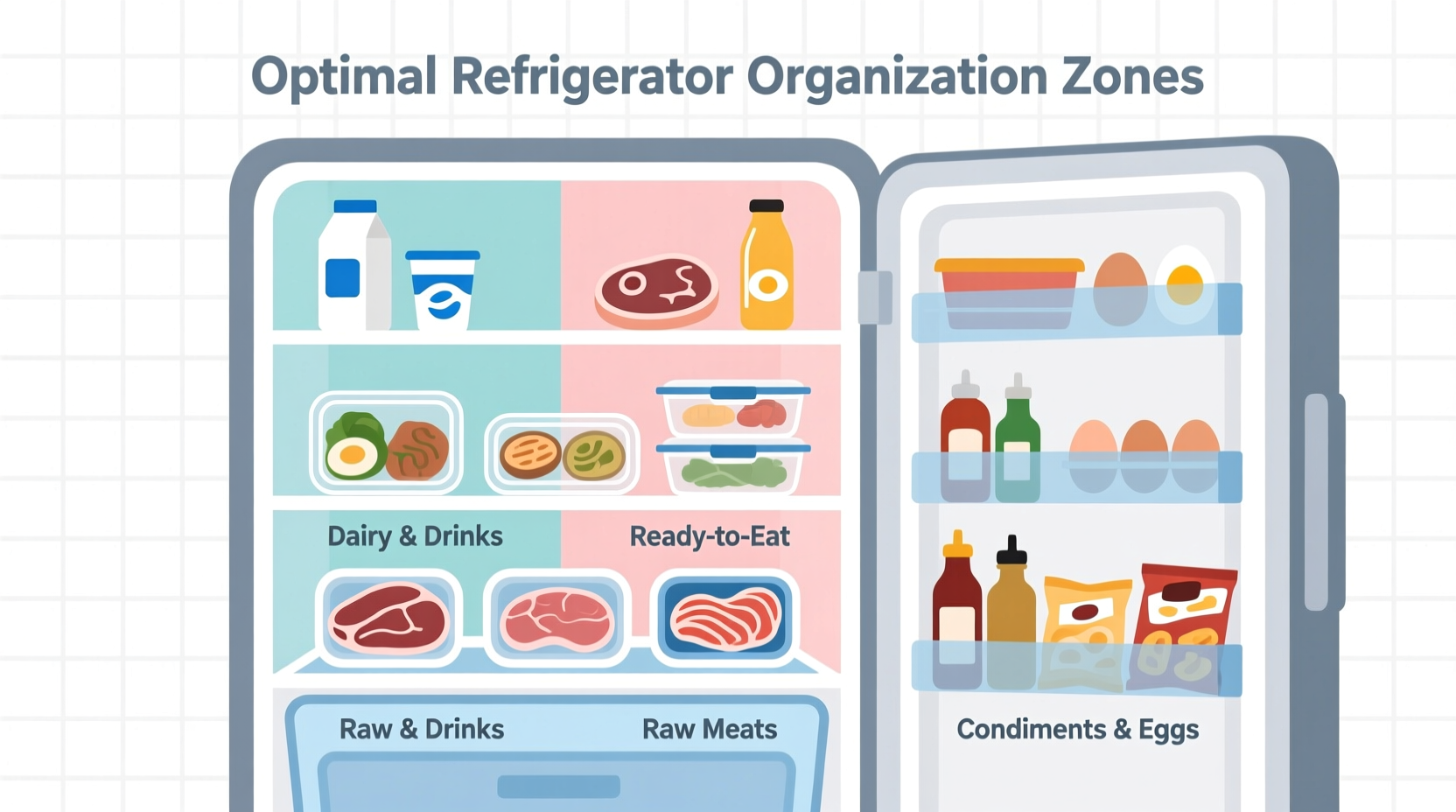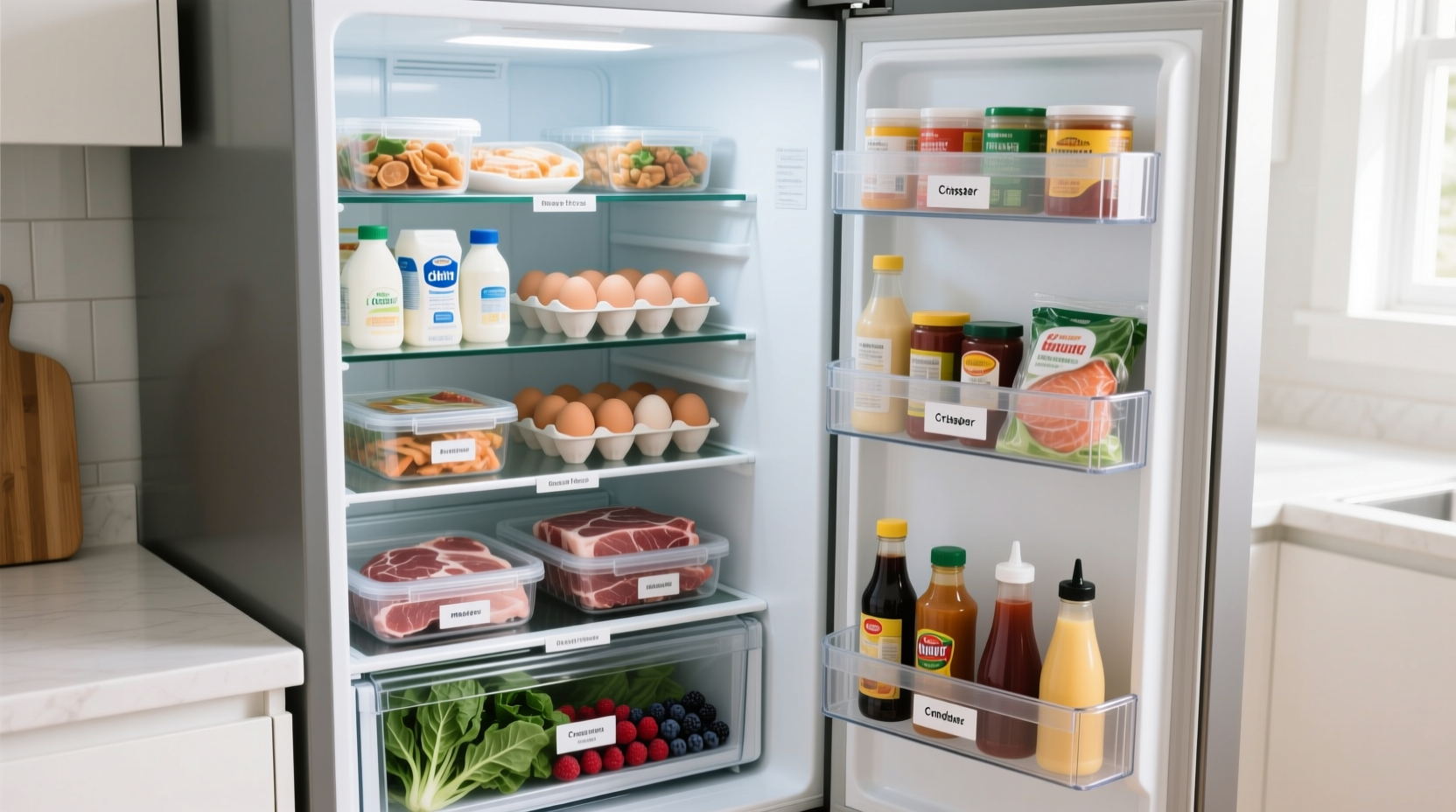Place raw meats on the bottom shelf, dairy and eggs on middle shelves, ready-to-eat foods and leftovers on upper shelves, and condiments in the door compartments. This organization prevents cross-contamination, maintains proper temperatures, and extends food freshness according to FDA food safety guidelines.
Ever opened your refrigerator only to find spoiled milk, mysterious leaks, or questionable leftovers? You're not alone. Proper refrigerator organization prevents 23% of household food waste while significantly reducing foodborne illness risks. This guide reveals the science-backed method used by professional kitchens and food safety experts to maximize freshness and safety.
Why Refrigerator Organization Matters More Than You Think
Food safety isn't just about temperature settings—it's about strategic placement. Your refrigerator has natural temperature zones ranging from 34°F (1°C) at the bottom to 42°F (6°C) near the door. Understanding these variations helps prevent cross-contamination and extends food shelf life by up to 30%, according to USDA research.
The Refrigerator Temperature Zone Map
Before organizing, understand your appliance's natural cooling patterns. This temperature gradient affects where different foods should be stored:
| Refrigerator Zone | Average Temperature | Ideal For |
|---|---|---|
| Bottom shelf (back) | 34-36°F (1-2°C) | Raw meats, poultry, seafood |
| Middle shelves | 36-38°F (2-3°C) | Dairy, eggs, leftovers |
| Upper shelves | 38-40°F (3-4°C) | Ready-to-eat foods, beverages |
| Door compartments | 40-42°F (4-6°C) | Condiments, butter, juices |
| Crisper drawers | 38-40°F (3-4°C) | Fruits and vegetables |
Step-by-Step Refrigerator Organization System
1. Bottom Shelf: The Raw Food Zone
Place raw meats, poultry, and seafood on the bottom shelf—always in sealed containers or on trays. This prevents potentially harmful juices from dripping onto other foods. The FDA Food Code specifies that raw meats must be stored below ready-to-eat items to prevent cross-contamination. Keep these items toward the back where temperatures remain most consistent.
2. Middle Shelves: Dairy and Leftovers Hub
Store milk, eggs, yogurt, and leftovers on middle shelves where temperatures stay consistently cool but not excessively cold. The USDA recommends keeping eggs in their original carton on a middle shelf (not the door) to maintain freshness. Leftovers should go in airtight containers and be consumed within 3-4 days.
3. Upper Shelves: Ready-to-Eat Zone
Place pre-cooked foods, beverages, and items you'll eat soon on upper shelves. This follows the "first in, first out" principle—keeping frequently accessed items at eye level reduces how long the door stays open. According to Foodsafety.gov, ready-to-eat foods should never be stored below raw ingredients.
4. Door Compartments: The Warmest Zone
Store condiments, juices, and butter in door compartments since these areas experience the most temperature fluctuation. The FDA notes that commercially prepared condiments (ketchup, mustard, pickles) remain safe at these slightly warmer temperatures due to their high acid or salt content.
5. Crisper Drawers: Produce Preservation Center
Use high-humidity drawers for leafy greens and low-humidity drawers for fruits that emit ethylene gas. The Produce Marketing Association reports proper crisper drawer usage can extend produce freshness by 25-40%. Keep fruits and vegetables separate to prevent premature ripening.

Special Considerations for Modern Refrigerators
While standard organization principles apply to most models, specialty refrigerators require adjustments:
- French door models: The bottom freezer compartment creates colder temperatures at the base—ideal for raw meats
- Side-by-side models: Door compartments experience more temperature fluctuation—limit door storage to shelf-stable condiments
- Refrigerators with bottom freezers: Upper shelves maintain more consistent temperatures—ideal for dairy products
Common Refrigerator Organization Mistakes to Avoid
Even with the right layout, these errors compromise food safety:
- Overpacking the refrigerator (reduces air circulation)
- Storing hot food directly in the refrigerator (raises internal temperature)
- Keeping the door open too long while organizing
- Ignoring expiration dates despite proper placement
The CDC reports that improper food storage contributes to nearly 1 million foodborne illness cases annually in the United States. Following these organization principles significantly reduces this risk while saving you money through reduced food waste.
Seasonal Adjustments for Optimal Performance
Refrigerator organization needs change with seasons. During summer months when kitchens run warmer, the door compartments can reach temperatures above 45°F (7°C). The FDA recommends moving dairy products to interior shelves during hot weather. In winter, you may need to adjust your thermostat setting slightly higher since ambient temperatures affect cooling efficiency.











 浙公网安备
33010002000092号
浙公网安备
33010002000092号 浙B2-20120091-4
浙B2-20120091-4